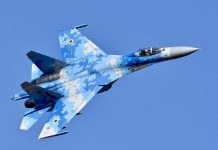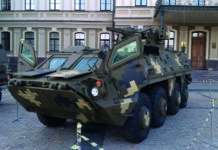With the rapid development of aviation in the 20th century, gasoline and kerosene have remained the main fuels for aircraft engines for decades. The most likely direction for further research development is toward hybrid and all-electric power units.
The basic requirements for engines have not changed dramatically – it is long service life and reliability, efficiency, low weight, as well as certain dimensions and shape. This, however, did not stop designers from searching for alternative principles of aircraft engines and energy sources. Some even arrived at the concept of nuclear aircraft engines.
Electric engines have been researched for several decades in the automotive industry, with a constant increase in their power capacity and range, which has made it possible to start replacing the internal combustion engine. For obvious reasons related to more complex requirements, aviation is much slower in this regard, although it is also moving in this direction. Electric actuators are also being increasingly used to replace mechanical or hydraulic ones in aircraft. Nevertheless, it is aviation that remains the most difficult area to enjoy any breakthrough in electrification.
Progress in the Industry
The reciprocating engine is the same age as modern aviation. This type of engine has long been the primary one, until turbojet engines were first introduced in the middle of the 20th century. Modern realities are forcing the aviation industry to adapt towards curbing fuel costs. The demands on the performance of modern aircraft engines are also growing steadily. Fuel costs are one of the major expense items for air carriers so significant new aircraft engines are naturally expected to save them fuel. Besides, aviation standards for noise and gas emissions are also being tightened.
The advantages of electric airplanes are undeniable: they are quieter, more reliable, and cheaper to operate. Besides, they resolve the issue of harmful emissions. On the one hand, such engines provide great opportunities for optimising the internal volume of the aircraft and on the other hand, the problem of imperfect batteries remains significant, significantly limiting the flight range. Furthermore, the required battery pack is still too heavy, while their charge is insufficient for long flights in the framework of standard aircraft operation.
To date, the most common engine in modern aviation remains the internal combustion engine. To replace such engines with those operating on solar or other renewables, as well as to put them into mass operation, remains critical to address the issue of solar panels’ excessive weight. For example, the SOLAR IMPULSE2 prototype aircraft was able to fly non-stop for 26 hours. Its batteries can be charged during daytime to release energy at night. If such types of aircraft are to be applied by the military domain, the first thing that comes to mind is UAVs able to carry out long flights without the need for recharging.
New Technology Developing Across the Atlantic
In advanced economies, new projects in the field of aviation technology are being developed at full speed. Often enjoying government support, the programmes explore new areas, including in the production of aircraft engines. It is worth noting that military and civilian engine projects often cross paths and complement each other since they use common technology to develop new engines.
The United States has gained experience in developing technology for power units used in both military and civil aircraft, which brings American companies to the leading positions in the global market. The main R&D driver for such technologies is offered by federal agencies, such as the Department of Defence and NASA, which are focused on longer-term prospects, that is, a period of 25 to 50 years. In the US, it is the Federal Aviation Administration (FAA) and NASA that deal with the design of new engines. The FAA develops technologies with a five to 10-year perspective, while NASA looks at an even longer term.
According to NASA’s research, achieving the 2030-2035 goals to reduce fuel costs and the noise of power units, including in subsonic passenger aircraft, is viewed as a challenging endeavour requiring new technical solutions.
Worldwide Research
More significant results, including zero emissions, can be achieved by switching to hybrid engines or all-electric power units, but more new equipment and technology has yet to be developed to this end. Boeing, Northrop Grumman, Cessna, General Electric, Rolls-Royce, and Pratt & Whitney partook in researching the concepts of future engine making.
In Europe, there are programmes underway to find new solutions in the field of aviation. The work is being carried out under the auspices of the European Commission, through framework programmes. The Sixth and Seventh Framework Programmes developed critical technologies for 2020-2025 passenger aircraft engines. Safran, MTU Aero Engines, and Rolls-Royce acted as project coordinators.
In 2019, the first-ever contract for the supply of electric aircraft was signed at the Le Bourget Air Show in Paris and concerned the nine-seat ALICE aircraft developed by Israel’s Eviation. Aircraft certification was expected to have been completed by late 2021. According to the declared features, the aircraft will be able to cover a distance of up to 1,000 km at a speed of 440 km/h. This is a fairly clear example of how aircraft design can be altered without using traditional engines.
With the ALICE, two electric motors are located at the wing tips, plus another at the tail. However, in 2021, the aircraft was re-designed with only two electric motors at the tail. The company opted for electric motors produced by the US-based magniX.
Hybrid Technologies
In May 2015, the CAFE Foundation’s Electric Aircraft Symposium (EAS) IX was held in California, where the findings of a report were voiced on the current progress in electric aircraft technology. The weakest link in the electric motor mechanism was its batteries. It was noted that lithium batteries had to be improved while their safe operation on board the aircraft has yet to be properly ensured.
In such conditions, one promising area on which the main manufacturers of aircraft engines are focused is hybrid power units, where a piston or gas turbine engine is combined with an electric motor. An electric power unit is simpler and lighter than a mechanical one, which allows for the creation of aircraft of various designs. Such an approach also allows for the increased efficiency of the engine’s operation, reducing harmful emissions, and achieving lower fuel consumption. The combination of a traditional engine and an electric motor partially solves the issues typical for modern aviation. Therefore, almost all major aircraft engine manufacturers have been working towards this end.
For example, in July 2021, Pratt & Whitney received support from the Government of Canada for the first flight involving a turboprop hybrid aircraft engine. United Technologies Corporation is developing hybrid engines to be installed in various aircraft. The corporation presented its PROJECT 804, a demonstrator of Bombardier’s DASH 8 light turboprop aircraft, where a hybrid power unit is installed to replace one of the engines. It is estimated that such an aircraft will consume less fuel and be able to carry up to 50 passengers over distances of up to 463 km within an hour.
Other Efforts
In June this year, Rolls-Royce, as part of its plans to reduce emissions by 2030, began testing the first components of its own hybrid power unit based on the AE2100 unit, previously developed in cooperation with Airbus. It is likely that the development of a hybrid power unit will be completed by 2030. France’s Safran is developing a hybrid propulsion system for helicopters and commercial aircraft. It is assumed that by 2040-2050, such power units will boast a significant share of orders.
General Electric, in partnership with XTI, is developing a TRIFAN hybrid power unit for light passenger and transport aircraft. Powered by a hybrid power system, the DENALI light aircraft by Cessna Catalyst will be able to transport up to four people at a distance of up to 3,000 km at a speed of about 500 km/h. The finished product is expected to make its maiden flight by 2030. Accordingly, the hybrid power unit can also be applied to military aviation as an additional electrical power source and will increase the aircraft’s thrust and manoeuvrability.
Promising Power Units for the Military
The list of requirements the Army sets for features and capabilities of electric-powered aircraft is even more stringent than for civilian airplanes. NATO’s areas of operations range from the High North to its southern borders. This means that future missions will be carried out both in cold and wet conditions, or hot, dry climates. Besides, there are missions where rapid manoeuvring is required in transporting cargo. This will all affect existing and future tactical platforms. Also, new military electric-powered aircraft will have to be able to operate in conditions of limited logistical support and infrastructure, while carrying massive ammunition loads.
Assessing the progress in the development of the new warplanes’ architecture, the US-based GE Aviation should be mentioned. It has successfully completed prototype tests of a promising adaptive aircraft jet engine, the XA100, which has been under development since 2007, contracted by the US Air Force. Due to the peculiar features of the engine shape design, it will consume less fuel. In particular, the adaptive engine is planned to be used on the F-35 LIGHTNING II fighter. Replacing the standard power unit with the XA100 will increase the F-35’s flight time by 50 per cent and the range by 35 per cent. Fuel consumption will also be significantly reduced by 25 per cent. Pratt & Whitney is also developing an adaptive engine.
Brazilian Progress
In 2020, during the National Defence Seminar organised by the Brazilian Ministry of Defence, Embraer and the Brazilian Air Force presented a new military aircraft with a hybrid propulsion system. The Short Take-Off Utility Transport project will boast two turboprop engines located closer to the fuselage and two electric engines at the wing tips. It is expected that the aircraft will have a range of 2,452 km with a 3-tonne load. The warplane will also be able to operate on short unpaved runways and in jungle areas.
In August 2021, the US Army signed a US$87M contract with Cummins to deliver the opposed-piston Advanced Combat Engine. The company specialises in the production of diesel engines and engines running on alternative fuels. The development of the Advanced Combat Engine (ACE) implies a modular diesel engine that can be hybrid in nature and use the innovative opposed-piston technology to provide leap-ahead capabilities in power density and heat rejection not available in the current marketplace. This Advanced Combat Engine technology delivers 50 per cent more power and 13 per cent more fuel efficiency. The ACE can be integrated into hybrid architectures to unify and ease the logistics burden of multiple powertrains and facilitate the adoption of electrified technology.
Rolls-Royce Innovation
Also in 2021, Rolls-Royce launched a new investment project with Purdue University to develop new test platforms for high-altitude and hybrid-electric engines to be installed in future generations of military aircraft.
The new Rolls-Royce high-altitude test cell at West Lafayette will expand opportunities for testing new engine designs, including for the V-22 OSPREY, C-130J SUPER HERCULES aircraft, and the Bell V-280 VALOR aircraft competing in the US Army’s Future Long-Range Assault Aircraft programme. As part of this programme, the new test facility will enable Rolls-Royce to move towards its goal of achieving a zero carbon footprint by 2030 and to improve energy efficiency of its propulsion systems.
BAE plans
BAE Systems are also actively working towards making civil and military aviation go electric. The company has spent decades developing hybrid and all-electric propulsion systems for commercial and military platforms, both on land and at sea. US-based start-up Wright Electric has begun developing an electric engine for the 186-seat WRIGHT 1 aircraft. The project will consist of several inverter engines, which will form the core of the power unit. The WRIGHT 1 will have three electric engines – two located under the wings and another one in the tail section. Wright Electric is collaborating on the project with BAE Systems on flight control and energy management systems and plans to start ground tests as early as this year, scheduling their first test flights for 2023.
Also in 2020, reports emerged about the TEMPEST project, a sixth-generation fighter manufactured by BAE Systems, whose fully electric model could be developed and powered by on-board batteries. The new aircraft is expected to be ready by 2030. No details have leaked so far as to the aircraft’s operation principle. However, it can be assumed that advantages of the electric version would be low noise and the lack of a heat trace from the exhaust gases, which will seriously complicate detection by enemy radars.
Electricity and UAVs
At the current level of technology development, it is most realistic to apply hybrid and electric motors without losing tactical and technical characteristics to UAVs, primarily due to the significantly lower weight and size compared to full-sized aircraft. It is in this direction that leading companies for the production of UAVs are heading, so it is only a matter of time.
At the 2019 Le Bourget Air Show, Airbus and Boeing showcased prototypes of electric UAVs, one of which was on display within the event’s flight programme. In March 2021, there were reports about the adaptation of X-Engine technology for drones manned by the US Air Force. In particular, that power supply for unmanned aircraft systems can be provided by a hybrid-electric propulsion system. The Small Business Technology Transfer (STTR) contract worth US$150,000 was awarded through AFWERX to support AGILITY PRIME, a project set to develop electric vertical take-off and landing (eVTOL) aircraft for commercial and military use.
A rotary diesel engine with a hybrid-electric unit is considered a promising model for UAVs. Since batteries today have insufficient battery life, they can only be fully utilised in a limited number of devices. At the same time, the military require a longer life for UAV flights. Moreover, the X-Engine, in conjunction with the generator, can charge batteries during flight, which will increase the operating range.
The X-Engine can also be configured in parallel lines with an electric drive, where the engine is used for traction or lift. LiquidPiston CEO and Co-Founder Alec Shkolnik concluded that the X-Engine has the advantages of a hybrid-electric configuration in drones against inefficient gasoline and diesel engines, as well as amid the lack of technological breakthroughs in all-electric engines.
Outlook
Transitioning to electric engines in the military aviation domain opens up a range of prospects. While it is only a matter of time, it is unlikely to happen overnight given the slow pace of the electrification process due to the need to develop multiple related technologies. Therefore, we should definitely expect to see a certain transition period when hybrid options will be used. As a result, hydrogen gas turbine engines, hybrid and battery-powered all-electric aircraft will gain prominence.
In the short term, by 2025, the demands on aircraft engines will increase significantly, but for the most part, they will still imply traditional operation principles. Various versions of aircraft with hybrid and electric propulsion are expected to have been produced by 2030-2040. Despite the high demand for technology development, it is the electrical system that looks most tempting in terms of the benefits it carries. This type of propulsion system will reduce the likelihood of aircraft detection and eliminate emissions. Engine maintenance costs will be significantly curbed, while the risks of mechanical faults will be reduced as well.
Key Questions
The main questions so far, however, concern the batteries to be used in all-electric aircraft, in particular their ability to store significant amounts of energy. Today, the dynamics of battery development is too slow to talk about meeting power needs of modern combat aircraft. The pace of charging or battery replacement, especially in combat conditions, as well as logistics and storage in varying climatic conditions, also raises questions.
Therefore, so far, the use of a hybrid propulsion system, which combines the best features of both traditional and electric engines, remains closest to implementation and practical application in combat aircraft. The main issue for designers is to make sure that the current stage does not drag on for too long.





![VP from Kyiv: Deep strikes, energy infrastructure, and politics [Office of the President of Ukraine]](https://euro-sd.com/wp-content/uploads/2025/11/Trump-and-Zelenskyy_Office-of-the-President-of-Ukraine-Kopie-218x150.jpg)







